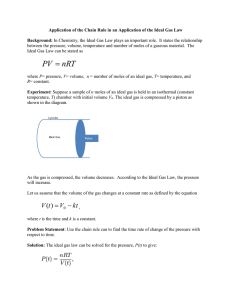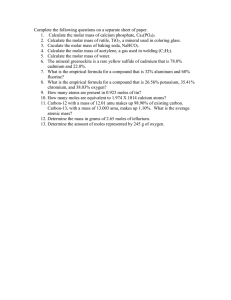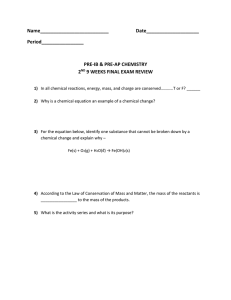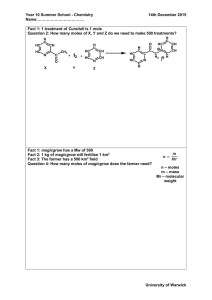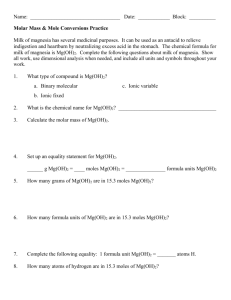Ideal Gas Law Practice Problems & Solutions
advertisement
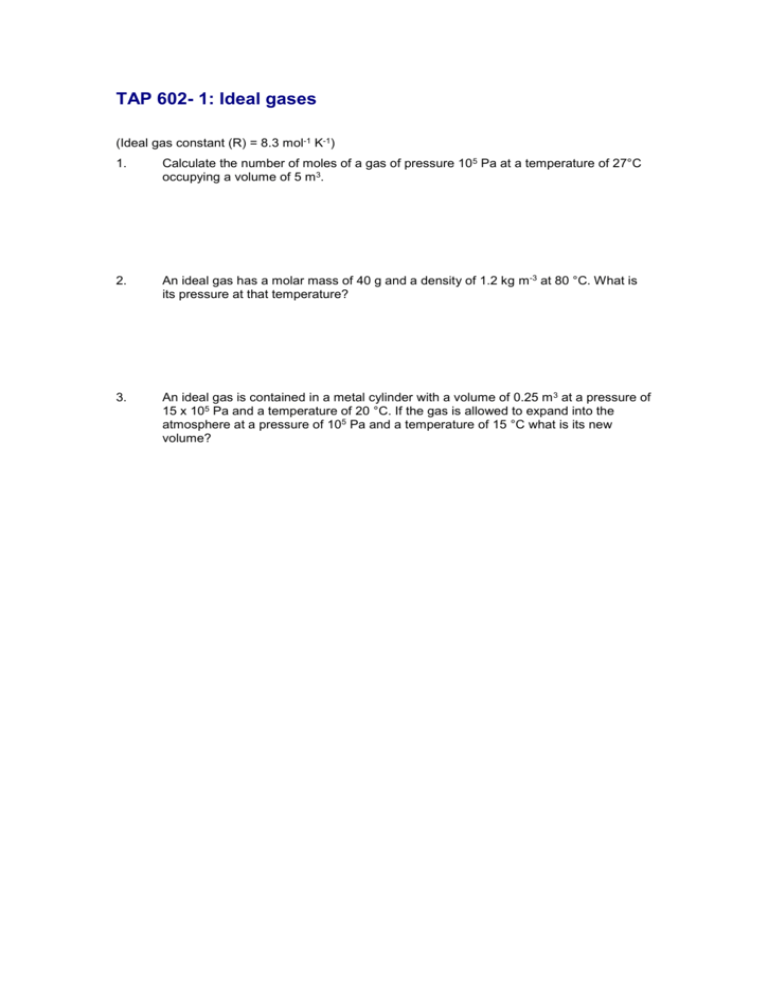
TAP 602- 1: Ideal gases (Ideal gas constant (R) = 8.3 mol-1 K-1) 1. Calculate the number of moles of a gas of pressure 105 Pa at a temperature of 27°C occupying a volume of 5 m3. 2. An ideal gas has a molar mass of 40 g and a density of 1.2 kg m-3 at 80 °C. What is its pressure at that temperature? 3. An ideal gas is contained in a metal cylinder with a volume of 0.25 m 3 at a pressure of 15 x 105 Pa and a temperature of 20 °C. If the gas is allowed to expand into the atmosphere at a pressure of 105 Pa and a temperature of 15 °C what is its new volume? Practical advice Work through some examples reminding students that T is in Kelvin Answers and worked solutions 1. Calculate the number of moles of a gas of pressure 105 Pa at a temperature of 27°C occupying a volume of 5 m 3. PV = nRT T = 273 + 27 = 300 K n = PV/RT = 105 x 5 / (8.3 x 300) = 200.8 = 201 moles 2 An ideal gas has a molar mass of 40 g and a density of 1.2 kg m-3 at 80°C. What is its pressure at that temperature? T = 273 + 80 = 353 K PV = nRT m = V so V = 0.04 / 1.2 with n = 1 (since 1 mole of gas has a mass of 40 g, or 0.04 kg) P = RT/V = 8.3 x 353 x 1.2/0.04 = 8.79x104 Pa 3. An ideal gas is contained in a metal cylinder with a volume of 0.25 m 3 at a pressure of 15x105 Pa and a temperature of 20oC. If the gas is allowed to expand into the atmosphere at a pressure of 105 Pa and a temperature of 15°C what is its new volume? T1= 273+ 20 = 293 K P1V1 P2V 2 T1 T2 T2= 273+ 15 = 288 K 15 x 105 x 0.25 / 293 = V2 x 105 / 288 Therefore: V2 = 15 x 0.25 x 288 / 293 = 3.69 m3 External reference This activity is taken from Resourceful Physics

